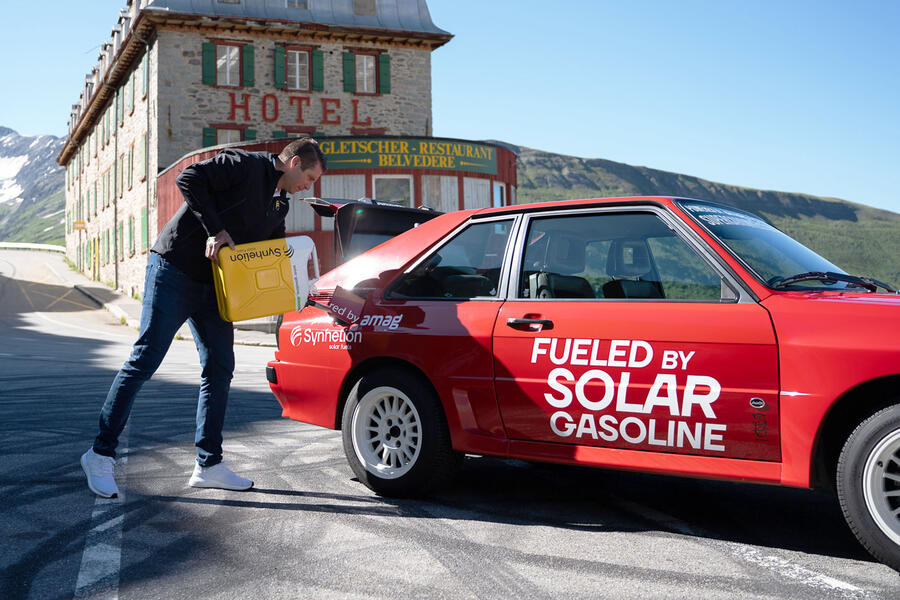Claims the fuels could allow electricity harvested outside Europe to be used for decarbonisation in the region
Synthetic petrol is not a silver bullet for decarbonising transport but will instead complement electric cars in years to come, according to the chief of solar fuels start-up Synhelion.
The firm last year opened its first plant in Jürich, Germany, using solar energy and waste biomass to produce “nearly†carbon-neutral jet fuel, diesel and petrol.
These are virtually identical to their fossil-based counterparts and can be used in cars or planes without any modifications.
But it does not eliminate the problem of particulate emissions (albeit reduced, as synthetic fuel does not have the contaminants found in fossil fuels), and producing it is less efficient than using the required electricity to power an EV directly.
“If you produce electricity in the UK or in Switzerland, I think it makes sense to use that electricity primarily to electrify [cars],†conceded Philipp Furler, CEO and founder of Synhelion. “You lose a lot in efficiency because of the process.â€
He added: “We don’t really see a competition between the twoâ€.
“The electricity you produce locally at home should be directly used for electrification, but the stuff which you cannot use could be used to produce fuels to store.â€
He added that synthetic fuels should be “produced at really good locations in Europe or outside Europe and then transportedâ€, while the electricity generated in Europe should primarily be used for EVs.

According to Furler, the electricity generated by a small wind or solar powerplant in Europe could be used to power 1700 electric cars annually, compared with around 450 ICE cars using synthetic fuels.
“So it doesn’t make sense to produce fuels; you should instead use it directly,†he said. "That I fully agree with. However, the point is you don’t need to produce the fuels locally.â€Â
By instead using a solar plant in Morocco or a wind plant in Chile, Furler suggested, you could make use of electricity that would not otherwise have made it to mainland Europe to clean up transport.
Moreover, Furler claimed, such a plant could produce three times more electricity per year than its equivalent in Europe. That means you could cleanly fuel thousands of ICE cars in Europe using that electricity, rather than zero EVs – because that power cannot be transported, whereas the liquid petrol can be.
Synhelion has already partnered airline Lufthansa and Switzerland’s importer for the Volkswagen Group, AMAG, to deploy its fuels in the real world.
AMAG was the first to use the company's fuel to power a car, demonstrating it in a short-wheelbase Audi Quattro.
But there remains a long road ahead until they are ready for the mass market, said Furler: “Around 2030 to 2035, the different pathways are likely at a competitive scale, and can then be deployed rather quickly.â€
He cited scaling up as the biggest challenge, because of the cost involved, and said it could take until 2050 until it’s on a comparable scale to the fossil fuel industry.
There is also an issue with cost: Synhelion’s fuels are currently “five to 10 times more expensive†than fossil fuels and “probably we will not achieve full parity".
The argument could become more compelling if fossil fuels are taxed on their carbon impact (bringing their costs up closer to synthetics fuels), said Furler, and a barrel price of around €1 (86p) per litre would make it “a viable solutionâ€.


